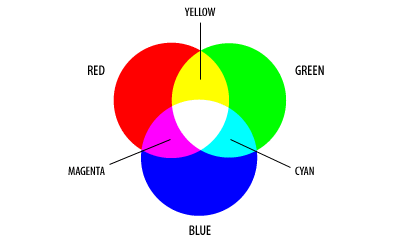
Color is caused by differing qualities of the light reflected or emitted by an object. Colors are described as primary (basic colors that cannot be produced by mixing other colors), secondary (simple mixtures of two primary colors) and tertiary (mixtures of secondary colors).
Colors are typically defined according to a color model, which specifies the way primary colors should be combined to produce a secondary color. Three common color models are RGB, HSV, and CMYK.

The RGB (red, green, blue) color model produces colors using combinations of the three primary colors - red, green and blue. RGB is an additive color model, meaning that the primary colors are combined with various strengths to produce a desired color. RGB starts out with black (the absence of all colors) and adds red, green, and blue light to make white.
The HSV color model (hue, saturation, value) is more intuitive to understand. When using this model, hue is the color being described (such as yellow or purple); saturation is the purity of the color; and value is the relative lightness or darkness (intensity) of the color.
Hue defines the color itself, for example, red in distinction to blue or yellow. The values for the hue axis run from 0–360° beginning and ending with red and running through green, blue and all intermediary colors like greenish-blue, orange, purple, etc.
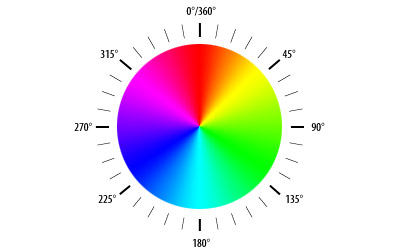
Saturation indicates the degree to which the hue differs from a neutral gray. The values run from 0%, which is no color saturation, to 100%, which is the fullest saturation of a given hue at a given percentage of illumination.

Value indicates the level of illumination. The values run as percentages; 0% appears black (no light) while 100% is full illumination, which washes out the color (it appears white). Colors at percentages less than 50% appear darker while colors at greater than 50% appear lighter.

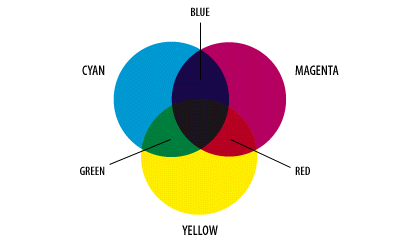
Similar to RGB, CYMK refers to a color system made up of cyan, magenta, yellow, and black. Cyan, magenta, and yellow are the three primary colors in this color space. Most computer modeling and animation tools do not support the CYMK model. It is most often used in the printing industry when determining how color is to appear when printed on paper.
Switching from color to shape, you can picture any object as being made up of points in space. To give the exact location of each of the object's position in space, you use a coordinate system.
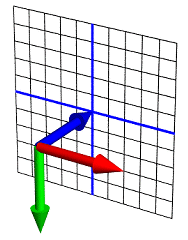
In 3D applications, coordinates are typically given in triplets (x - width, y - height, and z - depth). These numerical values represent the coordinates distance from the origin.
A face is the area between a minimum of three points (triangle). These points are referred to as vertices. The triangle is the basic building block of 3D applications. When you connect multiple faces together, you create a mesh.
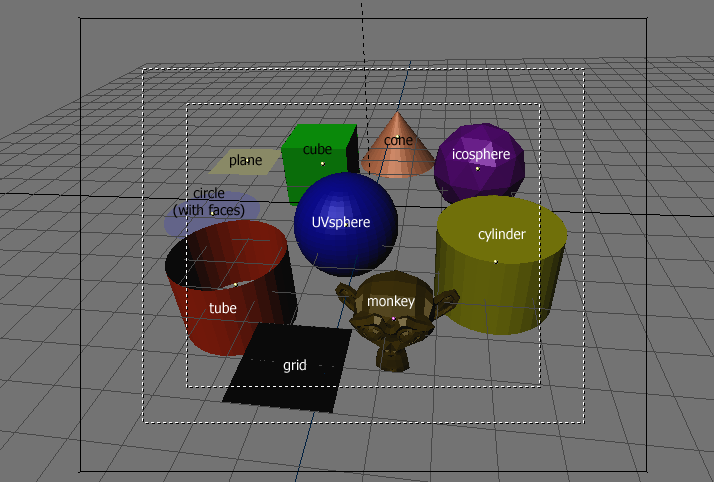
| Plane | A standard plane is made out of 4 vertices, 4 edges and one face. It is like a piece of paper lying on a table. A plane is not a real 3-dimensional object, because it is flat and has no 'thickness'. Example objects can be created out planes are ground surfaces or flat objects like tabletops or mirrors. |
| Cube | A standard cube is made out of 8 vertices, 12 edges and 6 faces and is a real 3-dimensional object. Example objects that can be created out of cubes are dice, boxes or crates. |
| Circle | A standard circle is made out of n vertices. The number of vertices can be specified in the popup window shown when the circle is created. The more vertices it consists of, the smoother the circle's contour becomes. Example objects that can be created out of circles are discs, plates or any kind of flat round object. |
| UVSphere | A standard UVsphere is made out of n segments and n rings. The higher the number of segments and rings is, the smoother the surface of the result UVsphere becomes. Example objects that can be created out of UVspheres are balls, heads or pearls for a necklace. |
| Icosphere | A standard Icosphere is made out of triangles. The higher the number of subdivisions is, the smoother the surface of the result Icosohere becomes. This object is normally used to achieve a more symmetrical and economical layout of vertices than the UVsphere. |
| Cylinder | A standard cylinder is made out of n vertices. The higher the number of vertices is, the smoother the circular cross-section becomes. Example objects that can be created out of cylinders are handles or rods. |
| Tube | A standard tube is made out of n vertices. The higher the number of vertices is, the smoother the hollow circular cross-section becomes. Example objects that can be created out of tubes are pipes or drinking glasses. |
| Cone | A standard cone is made out of n vertices. The higher the number of vertices is, the smoother the circular base becomes. Example objects that can be created out of cones are spikes or pointed hats. |
Transformations involve the manipulation of objects in virtual space. Transformations can take the form of one of the following:
Translation - basically moving an object in 3D space.
Rotation - Rotating an object around the center.
Scaling - resizing an object.
Animation is the movement of an object in three-dimensional space.
The most common type of animation used today is Key frame animation. Key framing (also known as "in-betweening" or "tweening") is accomplished by creating the main scenes only. Then the computer creates the drawings that lie in between automatically.